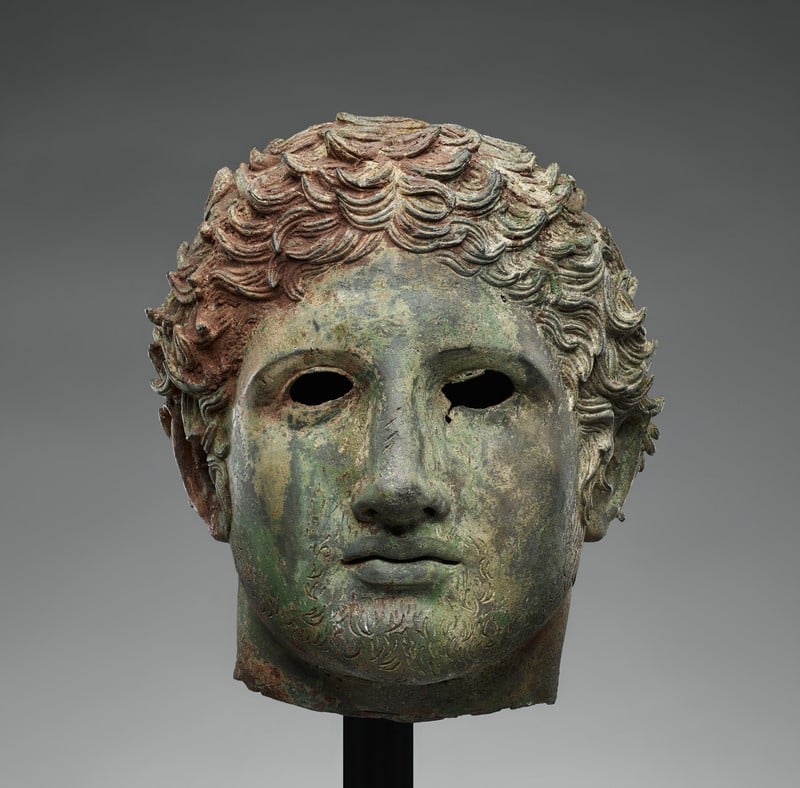
A life-sized bronze head of a young man has been removed from view by the J. Paul Getty Museum in Los Angeles and will be returned to Turkey after the institution learned it was illegally excavated.
The head had been in the antiquities collection at the Getty Villa Museum since it was acquired in 1971. But the museum said it had received new information from the Manhattan District Attorney’s Office in New York indicating it had been illegally excavated.
The California museum did not reveal what new information had come to light about the excavation, and officials in New York did not yet respond to a request for information. The head has been removed from view until it can be handed over to Turkish officials.
“In light of new information recently provided by Matthew Bogdanos and the Antiquities Trafficking Unit of the Manhattan District Attorney’s Office indicating the illegal excavation of this bronze head, we agreed that the object needed to be returned to Türkiye,” museum director Timothy Potts said in a statement.
The district attorney’s office did not immediately respond to a request for comment about the details of its investigation.
The Getty Museum said that its policies are to return objects to the country of their origin or modern discovery when reliable information indicates they were stolen or illegally excavated. In 2022, the museum returned a cache of artworks to Italy after learning that they were linked to disgraced antiquities dealer Gianfranco Becchina.
The bronze head dates to somewhere between 100 B.C.E and 100 C.E. and is a separately cast component of a life-size figure, detached from the body at the upper neck. The eyes were once inlaid with an unknown material that was not preserved. Researchers have not yet identified the body of the figure. The subject of the figure also remains elusive as it was fabricated in a “highly idealized” style and has not been matched to a member of an imperial family or other named individual, the museum said, although an inscribed alpha (“A”) is visible on the interior of the neck at the bottom rear edge.
Some scholars have associated the bronze head with the archaeological site of Bubon, in the Burdur province of southwestern Turkey. Bubon was subjected to illicit excavations in the late 1960s.
Potts added that by returning the head to Turkey, the museum seeks to continue building a constructive relationship with the Turkish Ministry of Culture archaeological colleagues in the country.
In total, the Manhattan District Attorney’s antiquities trafficking unit has recovered more than 4,500 antiquities stolen from 30 countries with a value in excess of $410 million since it was launched in 2017.
Last week, American and Chinese officials gathered for a ceremony at China’s consulate in New York City for the repatriation of 38 antiquities, including wooden sculptures, ivory carvings, and fragments of murals. Dating from the Yuan Dynasty (1279–1368), the Ming Dynasty (1368–1644), and the Qing Dynasty (1644–1911), most of them are Tibetan Buddhist artifacts. They were seized by the Manhattan District Attorney’s Office in March, according to the South China Morning Post, and will be transported back to China at a later date.